 | TODAY IN SCIENCE HISTORY NEWSLETTER - 5 MARCH |
| Feature for Today |
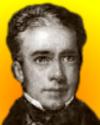 On 5 Mar 1830, limelight as a form of lighting was presented before scientists at the Tower of London. On 5 Mar 1830, limelight as a form of lighting was presented before scientists at the Tower of London. This invention by Thomas Drummond (1816) was adopted in lighthouses and for theatre stages. That the word "limelight" remains in the vocabulary to the present day, despite being replaced by more practical (and safer) forms of stage illumination is a testimony to the impact of the invention in its heyday. In Drummond's Inventions: The Heliostat and the Drummond Light, an extract from Memoir of Thomas Drummond (1867) you can read how limelight was created with neither of these applications in mind. In fact, Drummond was inspired to meet the needs of - would you believe it - a survey of Ireland! Another interesting extract is the Drummond Light and Lighthouse Experiments. The immense importance of lighthouses in the age of sailing ships and the dangers of rocks and reefs can be better understood if you think, perhaps, of today's airplanes flying without radar and air traffic control. A few accidents, commercial cargo and lives lost, and the government becomes intensely interested in improving the technology for air traffic safety. Thus it was, centuries ago for investigating limelight. As quaint as limelight sounds now, you can see that limelight, in its era, was potentially a major advance as a brighter light source for lighthouses. |
| Book of the Day | |
| |
| Quotations for Today | |
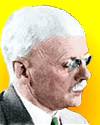 | "But in the present century, thanks in good part to the influence of Hilbert, we have come to see that the unproved postulates with which we start are purely arbitrary. They must be consistent, they had better lead to something interesting." |
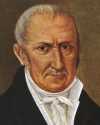 | "The language of experiment is more authoritative than any reasoning: facts can destroy our ratiocination—not vice versa." |
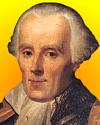 | "All the effects of Nature are only the mathematical consequences of a small number of immutable laws." |
| QUIZ | |
| Before you look at today's web page, see if you can answer some of these questions about the events that happened on this day. Some of the names are very familiar. Others will likely stump you. Tickle your curiosity with these questions, then check your answers on today's web page. | |
| Births | |
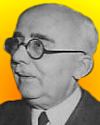 |  �douard Belin, born 5 Mar 1876, was a French engineer who made the first telephoto transmission, from Paris to Lyon to Bordeaux and back to Paris, using an apparatus of his own invention. �douard Belin, born 5 Mar 1876, was a French engineer who made the first telephoto transmission, from Paris to Lyon to Bordeaux and back to Paris, using an apparatus of his own invention.  In which decade was this first telephoto transmission made? In which decade was this first telephoto transmission made? |
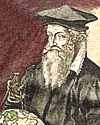 |  A Flemish cartographer, born 5 Mar 1512, created form embodying a form projection now known by his name. It shows parallels and meridians as straight lines spaced so as to produce at any point an accurate ratio of latitude to longitude. He also introduced the term atlas for a collection of maps. A Flemish cartographer, born 5 Mar 1512, created form embodying a form projection now known by his name. It shows parallels and meridians as straight lines spaced so as to produce at any point an accurate ratio of latitude to longitude. He also introduced the term atlas for a collection of maps.  Can you name this cartographer? Can you name this cartographer? |
| Deaths | |
 |  An Italian physicist (1745-1827) invented the electric battery that provided the first source of continuous current. It consisted of an alternating column of zinc and silver disks separated by porous cardboard soaked in brine. An Italian physicist (1745-1827) invented the electric battery that provided the first source of continuous current. It consisted of an alternating column of zinc and silver disks separated by porous cardboard soaked in brine.  Can you name this famous scientist? Can you name this famous scientist? |
| Events | |
 |  On 5 Mar 1830, limelight as a form of lighting was presented before scientists at the Tower of London, in a trial with two other lamp designs. It was invented by Thomas Drummond in 1816. Limelight was adopted in lighthouses and for theatre stages. However, because it required constant tending, it was willingly superceded by newer inventions. On 5 Mar 1830, limelight as a form of lighting was presented before scientists at the Tower of London, in a trial with two other lamp designs. It was invented by Thomas Drummond in 1816. Limelight was adopted in lighthouses and for theatre stages. However, because it required constant tending, it was willingly superceded by newer inventions.  How does limelight work? How does limelight work? |
 |  On 5 Mar 1616, a scientists's theory was declared "false and erroneous" in a decree written by Cardinal Robert Bellarmine, and issued by the Catholic Church in Rome. Further, no person was to be permitted to hold or teach the theory that the earth revolves around the sun. When Galileo subsequently violated the decree, he was put on trial and held under house arrest for the final eight years of his life. On 5 Mar 1616, a scientists's theory was declared "false and erroneous" in a decree written by Cardinal Robert Bellarmine, and issued by the Catholic Church in Rome. Further, no person was to be permitted to hold or teach the theory that the earth revolves around the sun. When Galileo subsequently violated the decree, he was put on trial and held under house arrest for the final eight years of his life.  Can you name the scientist whose theory was declared false in this decree? Can you name the scientist whose theory was declared false in this decree? |
| Answers |
When you have your answers ready to all the questions above, you'll find all the information to check them, and more, on the March 5 web page of Today in Science History. Or, try this link first for just the brief answers. Fast answers for the previous newsletter for March 4: Garrett Morgan; saccharin; Egyptology and deciphering of Egyptian hieroglyphics; Gila River; the decade including the year 1840. |
| Feedback |
 If you enjoy this newsletter, the website, or wish to offer encouragement or ideas, please send feedback by using your mail reader Reply button. If you enjoy this newsletter, the website, or wish to offer encouragement or ideas, please send feedback by using your mail reader Reply button. |
--
If you do not want to receive any more newsletters, Unsubscribe
To update your preferences and to unsubscribe visit this link


Δεν υπάρχουν σχόλια:
Δημοσίευση σχολίου